New World Thatchers is the result of the long-time desire of Commonwealth Roofing President Mike Sasse to re-introduce genuine European and African thatch roofing to North America. In the mid-1990s, Mike established a working relationship with a thatcher in England, then his son Joseph spent two years living in England & learning all aspects of the world’s oldest building material.
One of Two American-Born Master Thatchers
After this extensive training, Joseph returned to the U.S. & has installed thatch in theme parks, wineries, barns, zoos & residences all over the United States. He has now returned to this area and serves as one of only two American-born master thatchers in the nation.
Even though thatch has not been commonly used in North America since before colonial days, there are qualities that make it a perfect fit to fulfill modern criteria of appearance, performance and environmental concerns. We have worked extensively with the National Roofing Contractors Association, Oakridge Laboratory associates, insurance companies and European as well as African suppliers to merge the tradition of thatch with the demands of modern construction.
Add Curb Appeal With a Thatched Roof
Why thatch? In a word: appearance! There is no type of conventional roofing that can approach the depth, color, shape & soft warm appearance of thatch. Thatch is, of course, natural, organic & the most environmentally-friendly roof system available.
A roof can be thatched in water reed, long straw, combed wheat reed, flax, heather or one of several other types of straw or grass. Water reed is the longest-lasting type of thatch (up to 60 years) & is the material type preferred by Commonwealth Roofing.
A thatched roof is able to stand up to the worst weather conditions the United States & Canada can dish out. Reeds about 5 to 6 feet long are lashed to the roof deck or batten with steel rods and stainless wires or hooks. The bottom end of each reed is canted slightly up from the slope of the roof so only the last 1 to 2 inches is left exposed & the thatch layer is built up to a thickness of around 12 inches. Gravity carries rain & snow down the roof from each reed tip to the ones below & off the roof. Moisture typically does not absorb into the thatch layer more than 1 inch.
Thatched Roof Applications
Thatched roofing can add incomparable charm to homes, summer cottages, gatehouses, barns, beach houses, or most any building with a sloped roof, whether it be in a rural, urban, or suburban setting. Experience in England confirms that homes with thatched roofs command higher selling prices than similar ones with tile or slate. Thatch is also very effective in commercial settings including restaurants, storefronts, taverns, and retail shops. Even if thatching an entire building doesn’t fit your budget, imagine the charm that an affordable thatched gate house, gazebo, or portico could add to your property!
Although no special structural considerations are required for thatch (it weighs around 7 pounds per square foot), certain architectural features are needed. A roof slope of 45 degrees (12-in-12) is recommended & certain eave and dormer treatments utilize the depth & texture of thatch better than others. Because of their thickness, thatched roofs typically have no gutters or downspouts & some practical considerations such as clearance below dormer windows must be made.
Nearly all types of roofing present a substantial fire risk. For example, the asphalt in modern strip shingles is nothing less than highly flammable crude oil. The flammability of thatch is similar to that of wood shingles. With the advent of simple, modern fire retardants, however, this risk has been minimized to be no greater than with other more conventional roofs. If choosing to use a fire retardant on your roof, it should be re-applied every five to seven years with a simple spray application. If desired, & at no extra cost, residents can be trained & certified to apply this fire retardant on their own house.
Design and Pricing
Keeping thatch in mind during the early stages of planning & designing of your new home design can cut substantial cost that most spend in roof substructures. Thatch serves as a multi-functional roof system with its R-value reaching 22 and up depending on its thickness. Take the typical price of an OSB foam core panel (used in most timber built homes that adds both structure and insulation to a home’s roof), add drywall, asphalt shingles, labor & compare that cost to what we price to install your thatched roof. Depending on your own location & labor cost, you may be spending less, or just as much going with thatch than with what contemporary asphalt shingles can total in structure preparation.
Scheduling is another unconventional aspect of thatched roofs. Reed is harvested annually & the best quality reed is more available during certain seasons in different parts of the world. The limited availability of qualified thatchers extends installation time once work has commenced. Usually a lead time of two to three months is sufficient & most average-sized residences can be thatched in about a month.
Commonwealth, The Thatching Experts
Commonwealth Roofing has established approval from one of the world’s largest insurers of high-end residential buildings to cover buildings with a properly fire-protected thatch roof for no higher cost than that required for the same building with a conventional roof.
If you are considering the unique features of thatch for your home or business, contact us at New World Thatchers, a subsidiary of “The Roofers” at Commonwealth Roofing. There is not another company like this one in the country.

About Us
Established in 1981, Commonwealth Roofing was one of the first roofing contractors in Kentucky to be certified by the KRCA. Today, we provide comprehensive commercial and residential roofing services for home and business owners in Kentucky, Ohio, Indiana, Tennessee & Illinois.
